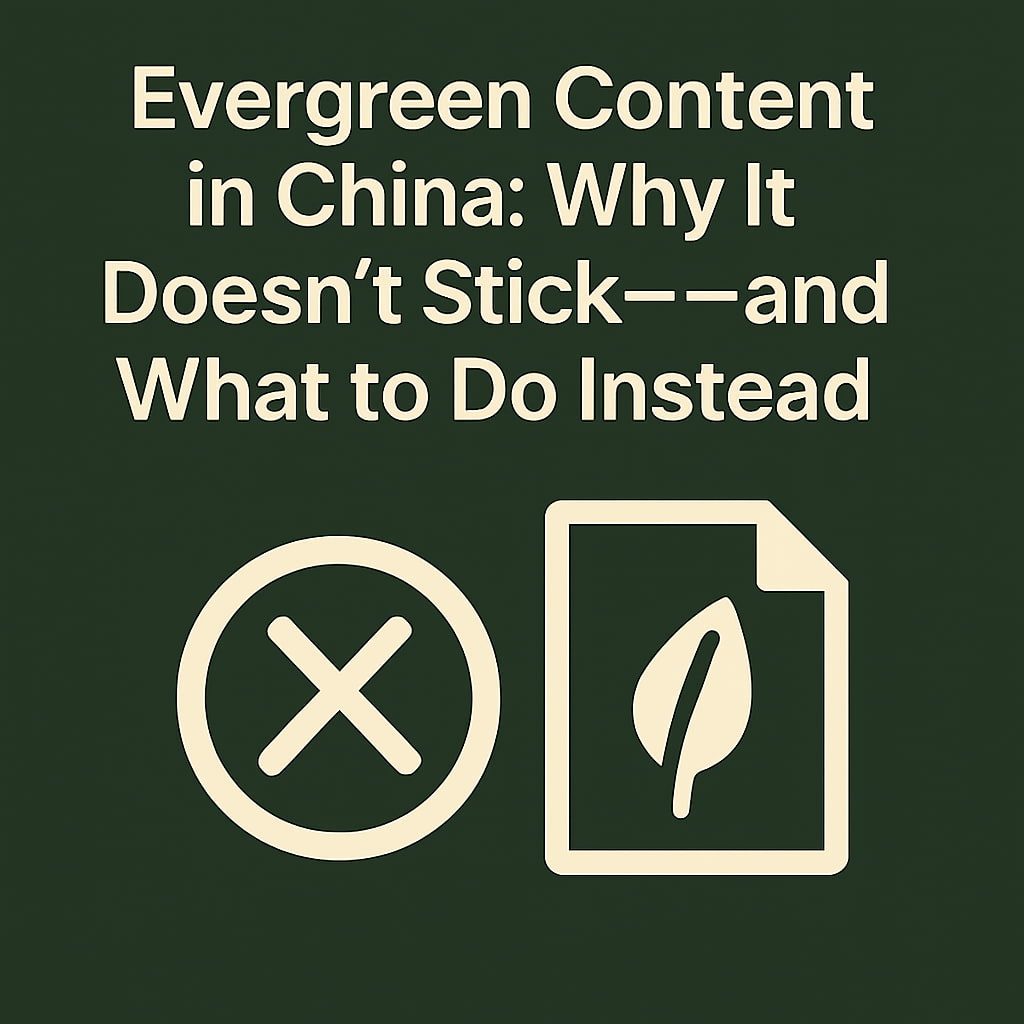Evergreen Content in China: Why It Doesn’t Stick—and What to Do Instead
By The Olivia
Independent Content Strategist for the China Market
This post is part of the “Content Platform” series. Click here to view the series introduction and why it was created.
Introduction
In most global content systems, evergreen pieces—well-structured guides, tutorials, or thought articles—gain value over time.
They are discoverable, searchable, and continuously reused.
In China’s platform ecosystem, this logic doesn’t hold.
Even thoughtful content can lose visibility within days.
The reason lies in how Chinese platforms handle discovery, circulation, and memory.
This article looks at why long-life content often fades quickly—and what kind of system design allows it to stay visible.
1. Discovery Systems Define Longevity
On platforms like Google, LinkedIn, or YouTube, discovery is built into the architecture.
Search indexing, topic clustering, and internal links keep good content alive long after publication.
These systems reward structure and consistency.
A post that performs moderately at first can still gain traction over months, because visibility isn’t dependent on timing—it’s dependent on relevance.
That infrastructure doesn’t exist on most Chinese platforms.
2. Why Chinese Platforms Reset So Quickly
The Chinese content ecosystem runs on momentum.
Platforms like Rednote, WeChat, and Zhihu prioritize freshness, engagement, and emotional resonance over long-term indexing.
- Rednote pushes content through a short recommendation window. Once the early interactions slow, exposure stops.
- WeChat Official Accounts distribute mainly through immediate subscribers and social shares. Older posts have little organic reach.
- Zhihu supports some search visibility, but its ranking still depends on recency and continued discussion.
In effect, these systems remember conversations, not archives.
Once attention shifts, even high-quality work drifts out of view.
3. Building for Resurfacing
If the environment doesn’t preserve visibility, brands need to design content ecosystems that can surface older ideas naturally.
The focus moves from “permanence” to “renewal.”
(1) Create a connected body of work
Series, themes, or recurring formats give content continuity.
When readers encounter one piece, they’re led to others.
For platforms driven by freshness, this internal linkage provides a form of memory.
(2) Reframe ideas across platforms
Strong ideas can move across ecosystems in different expressions—an article on WeChat, a condensed tip on Rednote, a discussion point on Zhihu.
Each version activates a different part of the audience.
(3) Integrate resurfacing into workflow
Visibility in China often requires planned recirculation.
That can mean referencing earlier posts, updating older insights, or linking back to foundational material in new campaigns.
It’s how an ecosystem maintains coherence even when algorithms don’t.
Conclusion
Evergreen content in China is not defined by time—it’s defined by structure.
Without platform memory, longevity depends on how well ideas are connected, refreshed, and reintroduced.
Brands that design for resurfacing don’t rely on luck or virality.
They build systems where attention can return, even after the scroll has moved on.
← Back to All Articles
← Learn more about my services
You May Also Like:
Why Rednote Brand Accounts Struggle to Grow
Rednote brand accounts often struggle to grow. Learn why billboard-style content holds them back and what works better.
Rednote Brand Starter Guide: Practical Steps for Getting Started
A beginner’s guide to Rednote (Xiaohongshu) for brands—covering goals, profile setup, content direction, posting rhythm, and performance tracking.
How to Balance Paid Ads and Organic Content on Rednote
On Rednote, ads drive visibility while organic posts create lasting trust. The real challenge is balancing both at different stages.
Ready to take your content further?
Let’s build a strategy that resonates in the Chinese market.
THE OLIVIA WAY
© 2025 THE OLIVIA WAY. All rights reserved.
